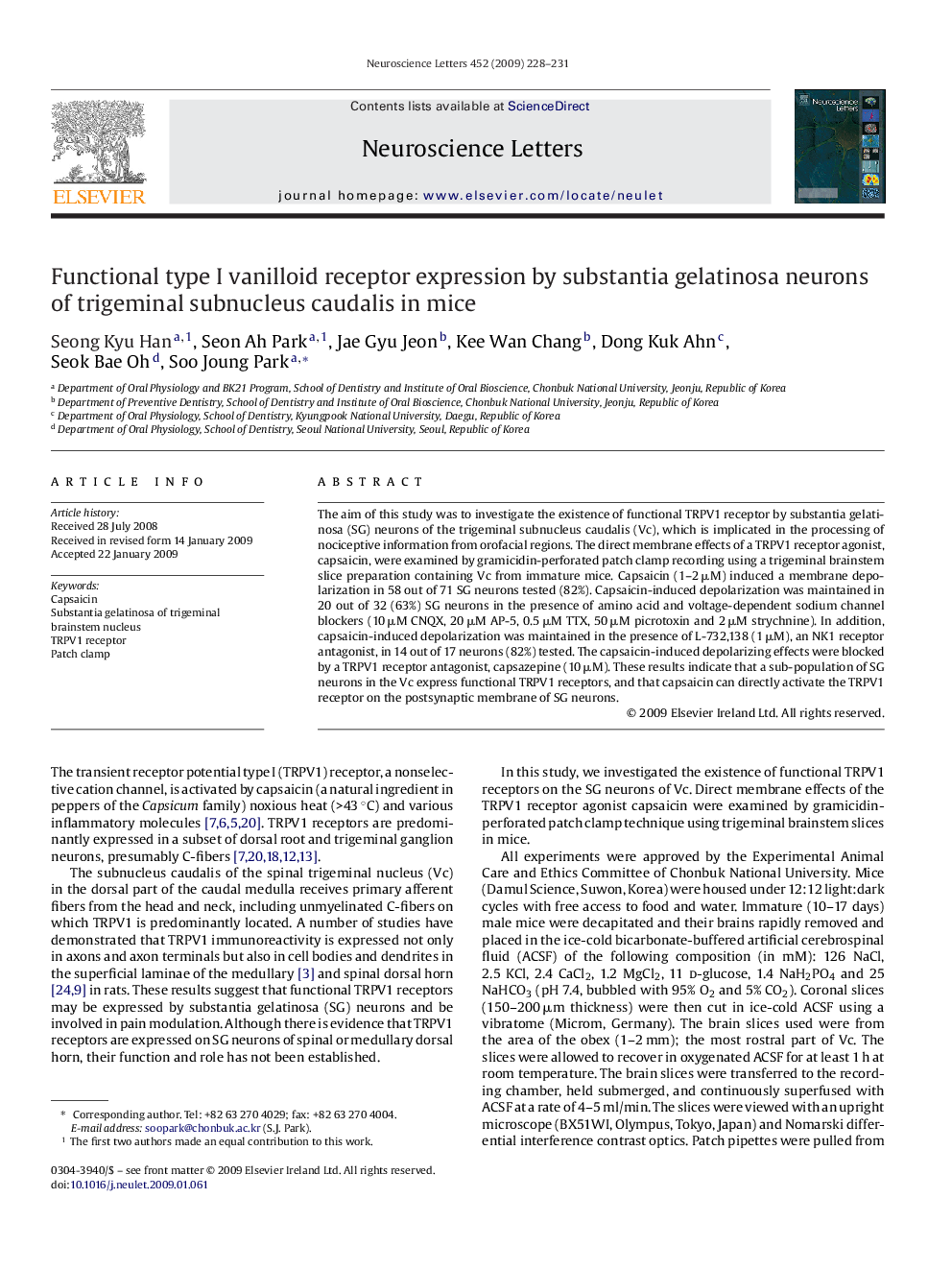| Article ID | Journal | Published Year | Pages | File Type |
|---|---|---|---|---|
| 4347310 | Neuroscience Letters | 2009 | 4 Pages |
The aim of this study was to investigate the existence of functional TRPV1 receptor by substantia gelatinosa (SG) neurons of the trigeminal subnucleus caudalis (Vc), which is implicated in the processing of nociceptive information from orofacial regions. The direct membrane effects of a TRPV1 receptor agonist, capsaicin, were examined by gramicidin-perforated patch clamp recording using a trigeminal brainstem slice preparation containing Vc from immature mice. Capsaicin (1–2 μM) induced a membrane depolarization in 58 out of 71 SG neurons tested (82%). Capsaicin-induced depolarization was maintained in 20 out of 32 (63%) SG neurons in the presence of amino acid and voltage-dependent sodium channel blockers (10 μM CNQX, 20 μM AP-5, 0.5 μM TTX, 50 μM picrotoxin and 2 μM strychnine). In addition, capsaicin-induced depolarization was maintained in the presence of L-732,138 (1 μM), an NK1 receptor antagonist, in 14 out of 17 neurons (82%) tested. The capsaicin-induced depolarizing effects were blocked by a TRPV1 receptor antagonist, capsazepine (10 μM). These results indicate that a sub-population of SG neurons in the Vc express functional TRPV1 receptors, and that capsaicin can directly activate the TRPV1 receptor on the postsynaptic membrane of SG neurons.
